Design Summer School
18.08. – 28.08.2022
Selected participants will be announced on May 31st.
Apply now↗
Applications
are closed
Thank you for your interest, you're welcome to apply next year.
Philosophy Of The Chair
“And now I began to apply myself to make such necessary things as I found I most wanted, particularly a chair and a table; for without these I was not able to enjoy the few comforts I had in the world; I could not write or eat, or do several things, with so much pleasure without a table: so I went to work”
Daniel Defoe, Robinson Crusoe (1719)
This year, Mad Design Summer School will focus on one of the most essential pieces of furniture - the chair. It is an object that has been interpreted endlessly by artists, designers and craftsmen over the most part of humankind’s history. It can be found in every home and public establishment. That is why we believe it is an important product for every creative person to explore once, and find their own interpretation.
In the search for your chair’s shape we will employ old techniques and traditional craft, combined with details aided by new technology. We will traverse the full designer’s process from concept development to chair making. And we will go one step further, by teaching our students the art of tool-making as well. When one knows how to make their tools, design opportunities widen. In this way we teach our students a fuller spectrum of the making process and pass on old knowledge to enrich their creativity and understanding, while simultaneously providing contemporary design guidance.

Process
Our craft mentors this year will be Latvian master craftsmen Rihards Vidzickis (wood craftsman), Sören Uhlmann (blacksmith), who will guide the tool making, Jānis Straupe (wood artisan) and Vizma Zvirbule (birchbark weaver), who will oversee the chair construction. For technical details our 3D-workshop head Toms Lucans (LV) will oversee developments of 3D modeling and the printing thereof.
To help guide the conceptual and aesthetic design process we have a wonderful team of international design tutors joining us, each with their own active practice: Lucas Maassen (NL), Paul Heijnen (NL) and Maria Bruun (DK). Besides inspiring our students with lectures, they will follow the design process of every student and provide insight and guidance.
Set in the historic town of Līgatne, surrounded by beautiful wild nature, Mad Design Summer School will be a summer course of passing on craft knowledge, broadening design thinking and appreciating the basic principles of creation.
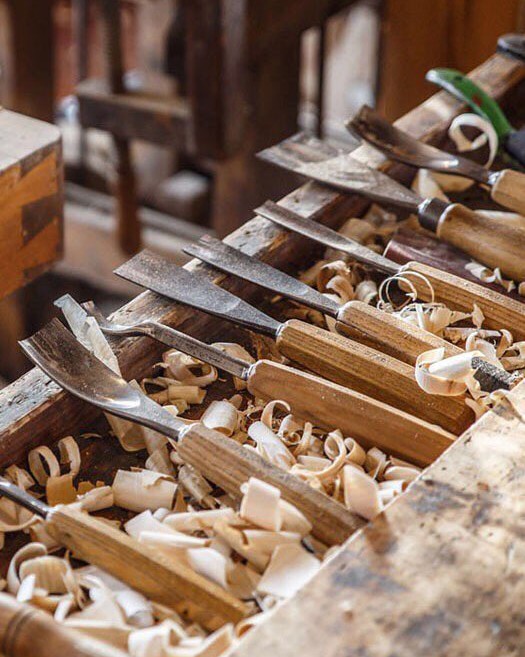
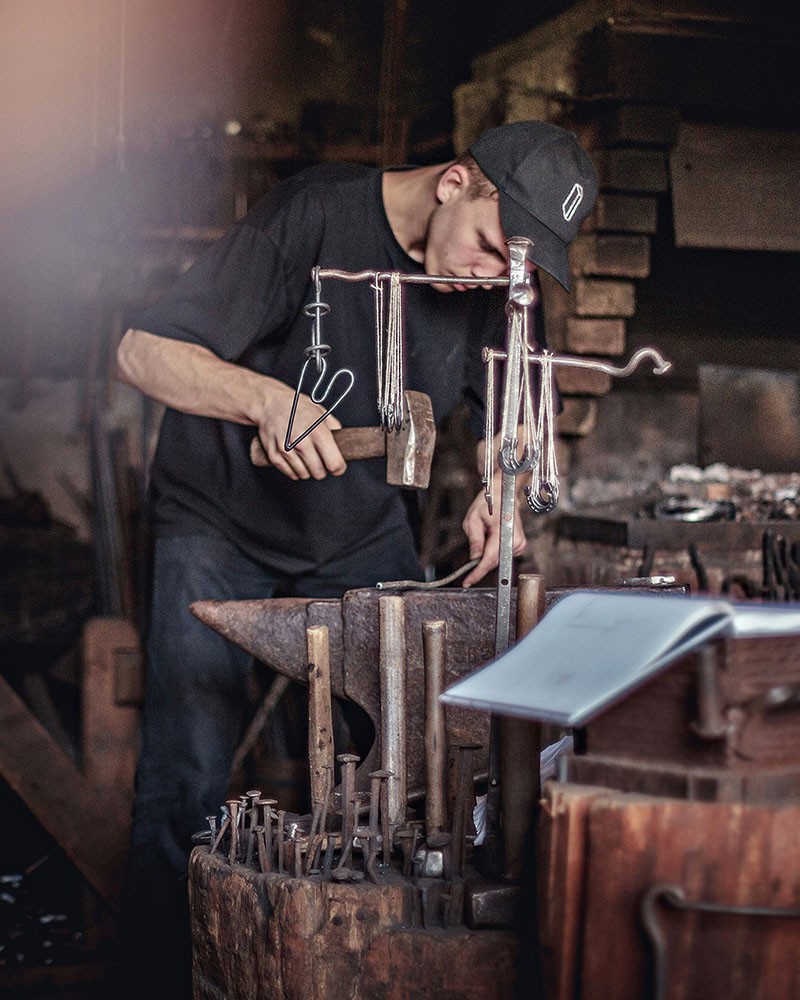
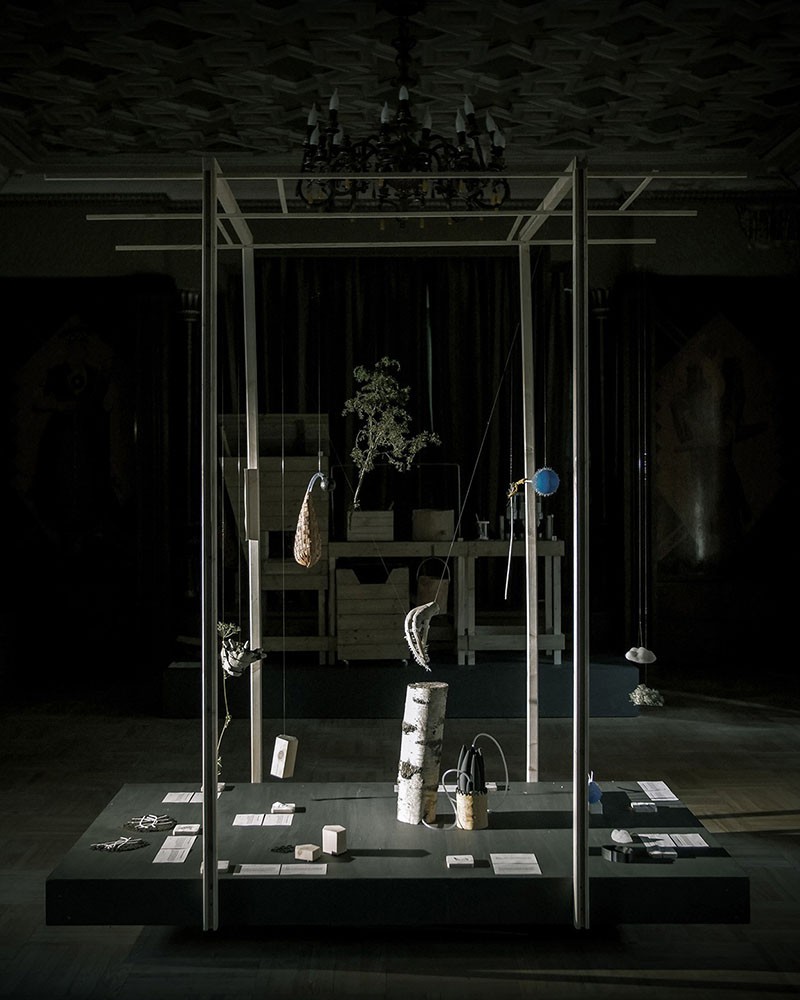
Programme
Day 1 (Thursday, 18 AUG 2022)
• Arrival in Līgatne
• Student introduction
Day 2 (Friday, 19 AUG 2022)
• Public lectures
• Introduction to workshops
Day 3 (Saturday, 20 AUG 2022)
• Public lectures
• Introduction to the brief
Day 4 (Sunday, 21 AUG 2022)
• Public lectures
• Excursion around Līgatne
Day 5 (Monday, 22 AUG 2022)
• Ideation
• Workshop
Day 6 (Tuesday, 23 AUG 2022)
• Bread baking
• Workshop
Day 7 (Wednesday, 24 AUG 2022)
• Workshop
Day 8 (Thursday, 25 AUG 2022)
• Finishing work
Day 9 (Friday, 26 AUG 2022)
• Final exhibition
Day 10 (Saturday, 27 AUG 2022)
• Departing
*Please note that the programme is subject to change
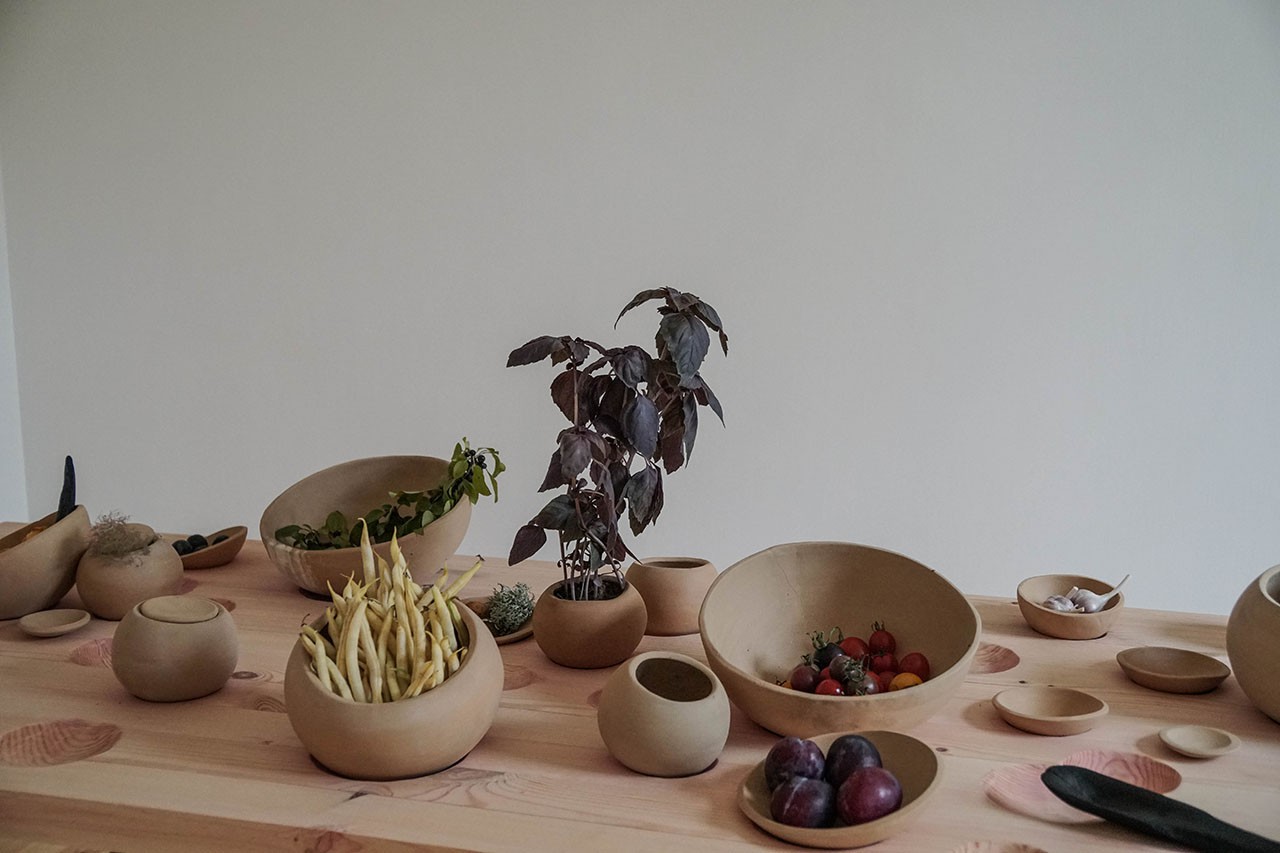
Tutors


Paul Heijnen (NL)
www.paulheijnen.com
Paul's work is focused on the creation and crafting of limited editions and one-offs. Treading the the grey zone between industrial design, crafts, architecture, sculpture, conceptual, installation and many other arts but applied to or at least suggesting objects of use. New objects come to life as the intricate, modular designs grow in to and out from each other, becoming an evolving epiphanous tree of designs & ideas which can be traced to a common ancestor.
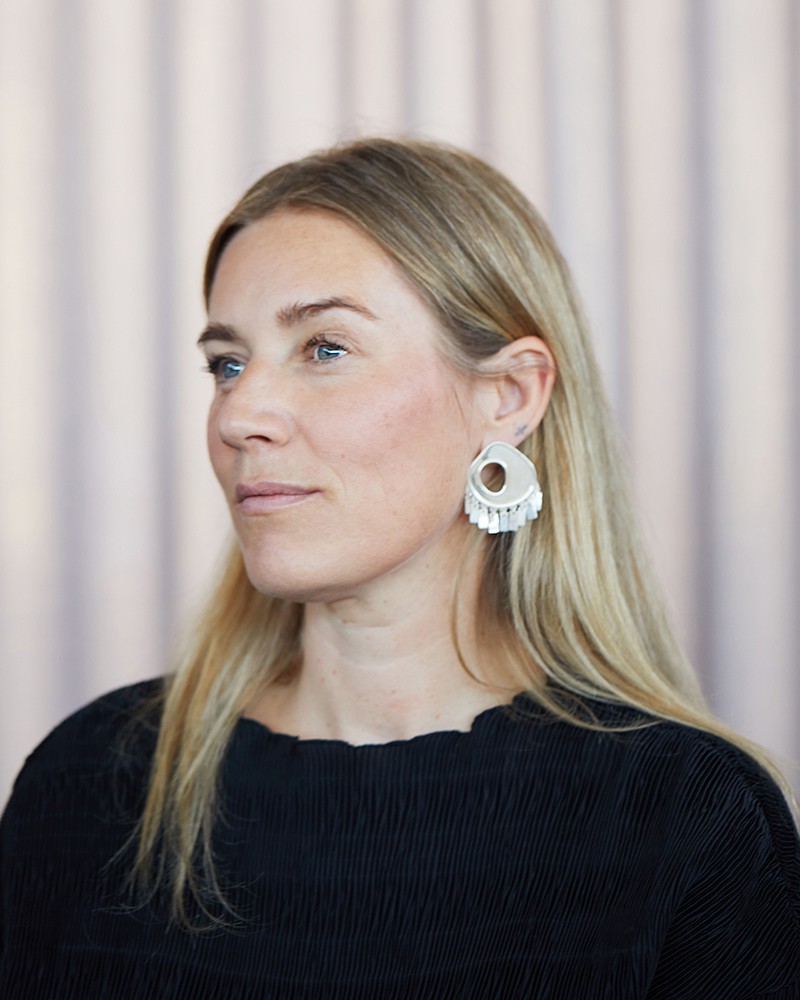
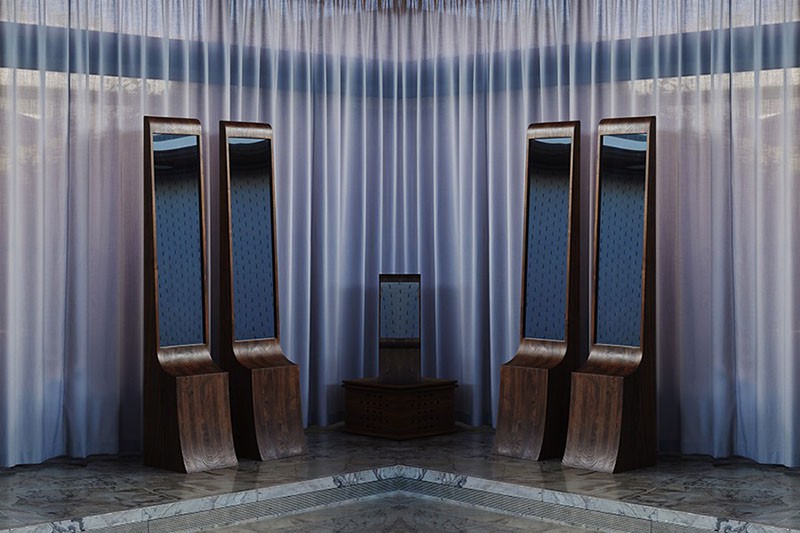
Maria Bruun (DK)
www.mariabruun.com
Maria Bruun is a trained furniture designer from the Royal Danish Academy of Fine Arts, Design School, based in Copenhagen, Denmark, where she works with furniture, interiors and exhibitions at the junction between the artistic and commercial, insisting that one does not exclude the other.
Maria Bruun joins a long-standing Danish design tradition. With sincere respect for classic Danish furniture design, Maria builds on this foundation in an innovative approach, and creates her designs in close dialogue with skilled craftsmen.
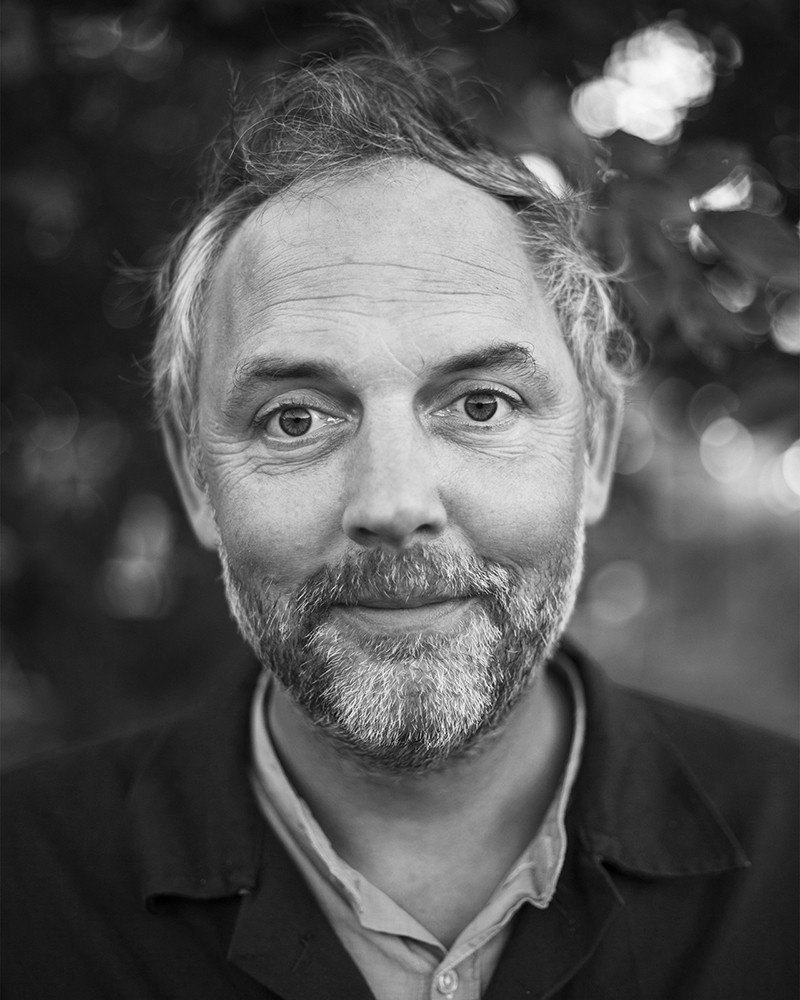

Lucas Maassen (NL)
www.lucasmaassen.com
Lucas Maassen (Eindhoven, 1975) lives and works in Eindhoven. After studying at the Design Academy Eindhoven he started his career as an independent conceptual designer. His work has been exhibited in museums all over the world such as MoMA New York, Grand Palais Paris, Vitra Design Museum Weil am Rhein, New Museum New York, Museum of Art and Design New York, Centraal Museum Utrecht and the van Abbe museum Eindhoven.
Besides his design practice Maassen teaches at the Design Academy Eindhoven and at the Academy of Art Communication and Design inTilburg.
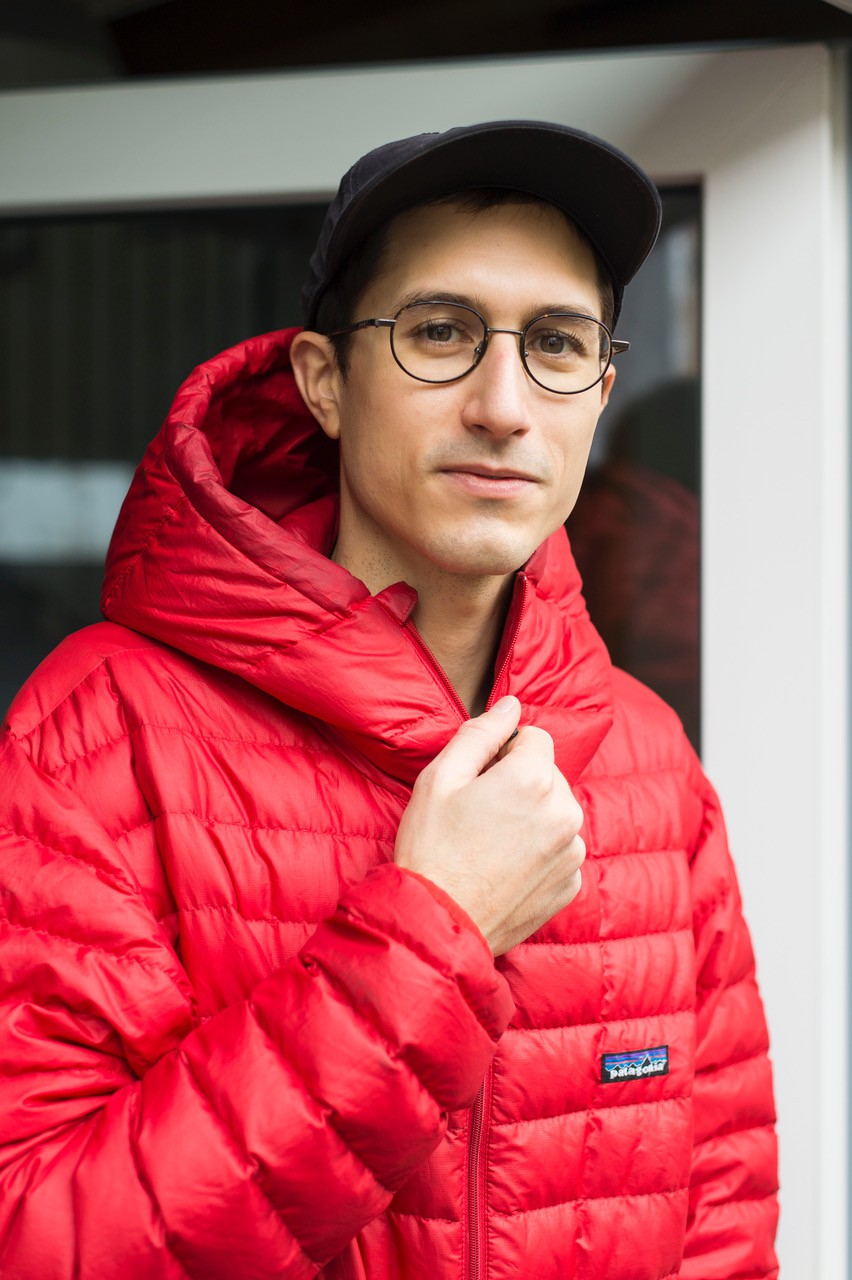

Dimitri Bähler
www.dimitribaehler.ch
Dimitri Bähler (Moutier, 1988) grew up in Switzerland. Graduated from the ECAL he founded his studio in Biel, Switzerland in 2014.
Awarded several times (finalist Design Parade 8 with Camper Prize 2013, Nominee Swiss Design award 2014 and 2015, Grand Prize Interieur Biennale, 2016, Finalist Hublot Prize 2019), Dimitri has also participated in a multitude of residencies and workshops across the globe.
He is today collaborating with national and international labels such as Hay (DK), Established & Sons (UK), Muuto (DK), Vaarnii (FI), Karimoku New Standard (JP), Moustache (FR), or Atelier Pfister (CH) and different Galleries.
Very much influenced by practical experiences, Dimitri is in constant search for the right tension between simple and complex, functional and poetic, abstract and figurative, experience and spontaneity.
His Work is part of different Museum’s and Institution’s collection such as Grand Hornu (BE), MUDAC Lausanne (CH), Museum für Gestaltung Zürich (CH), Swiss Institute New York (USA).
Lecturers
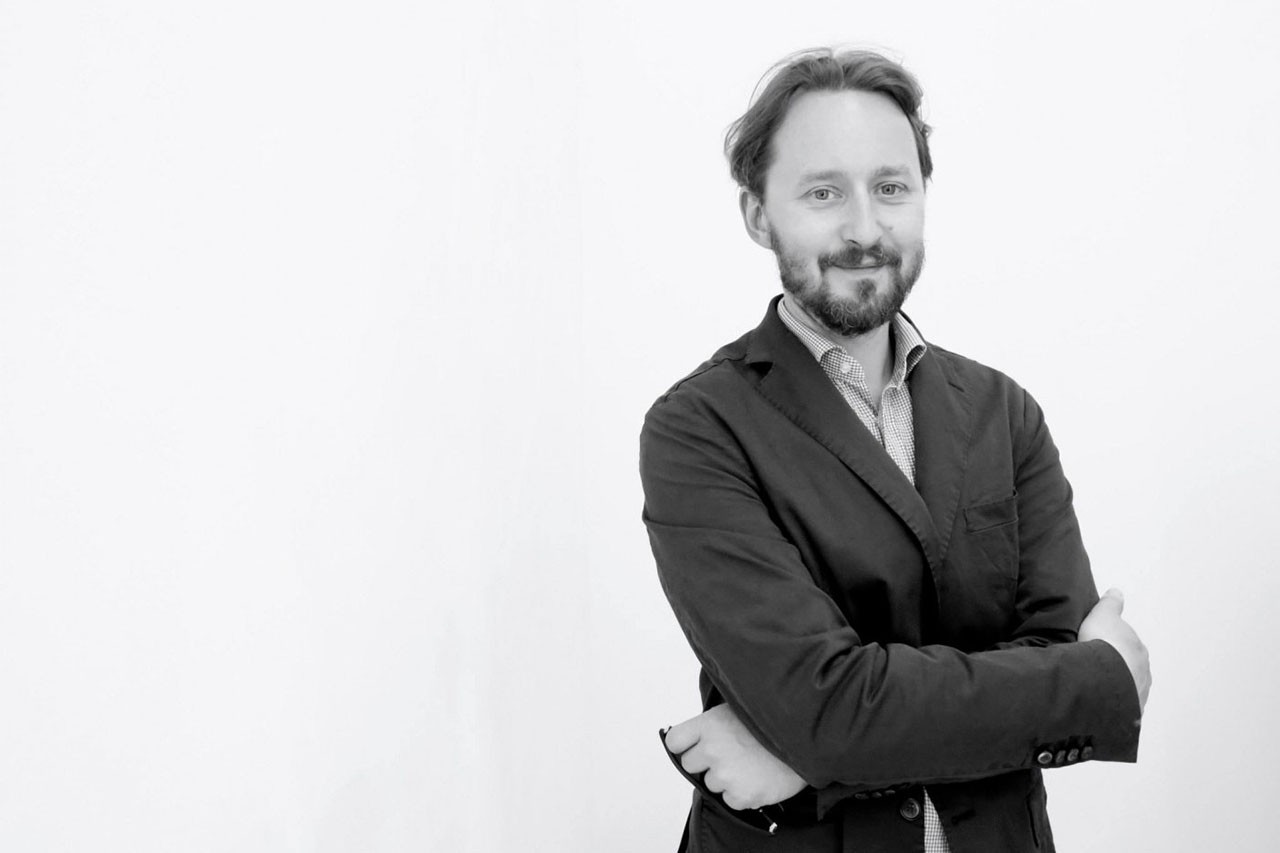
Andris Brinkmanis (IT)
"Everyday Aesthetics. The Agency of Objects."
Andris Brinkmanis is an art critic and curator, born in Riga and based in Milan. He is a Senior lecturer and the Course Leader of BA in Painting and Visual Arts at NABA in Milan.
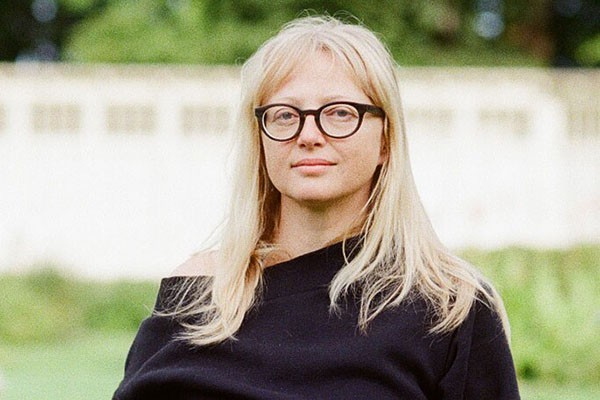
Karina Vissonova (HU)
“Are we going to make it? Matters around sustainability informed design.”
Dr. Karina Vissonova is a Founding Director of the Institute of Advanced Design Studies - an independent research institute focused on sustainable design and transdisciplinary education (Hungary).

Ainārs Kamoliņš (LV)
"The Philosophy of Furniture"
Ainārs Kamoliņš is a philosopher from Riga. He has obtained an MA in philosophy from the University of Latvia. Kamoliņš’s main academic interests concern the questions raised by the early modern philosophers, including how biology, natural and exact sciences are linked to philosophical theories.
Participants
Name Lastname (School)
Name Lastname (School)
Name Lastname (School)
Name Lastname (School)
Name Lastname (School)
Workshop venue
At the Vienkoči Woodwork workshop, you will learn about the history of woodworking from the Stone Age through to the present day. The interior of the Woodwork Workshop imitates the interior of an old workshop from the end of the 19th century and the first half of the 20th century. The workshop has a woodworking tool collection, which you will have the chance to examine, and get to know more about the function of each tool. It has ancient, unique tools, as well as Sheffield carving tools, whose quality is renowned all over the world. Students will also have access to a design laboratory equipped with FFF 3D printers and materials installed on the 2nd floor of the workshop.


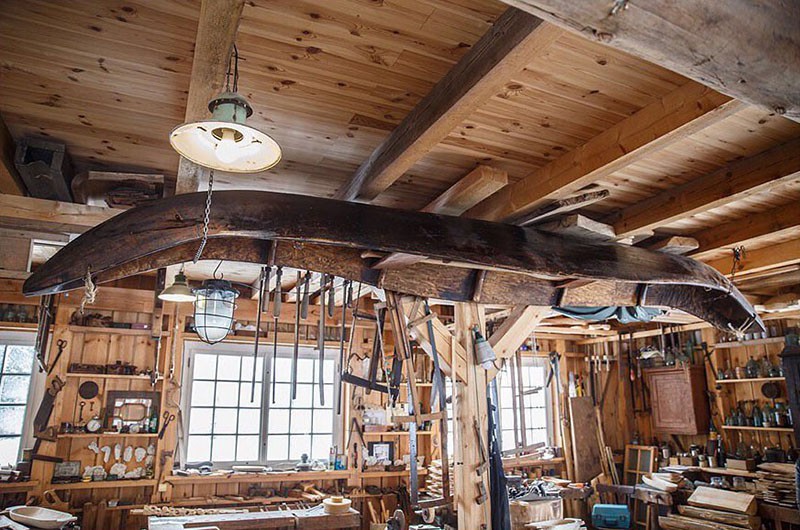
Craftsmen
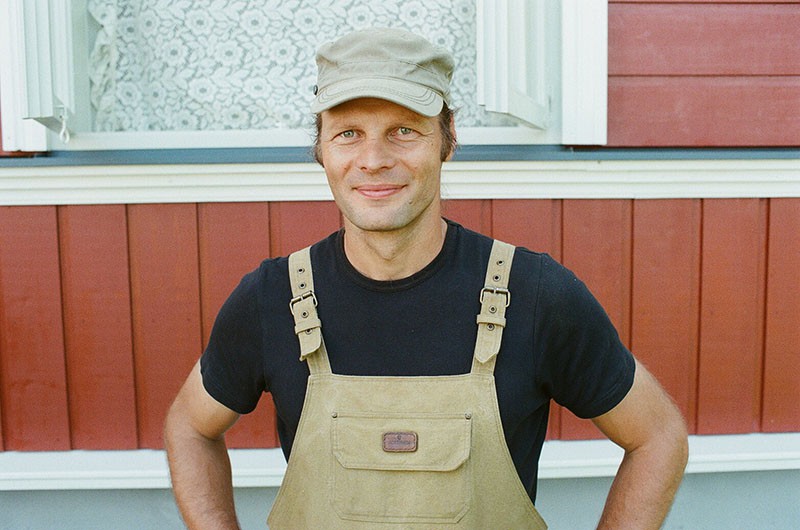
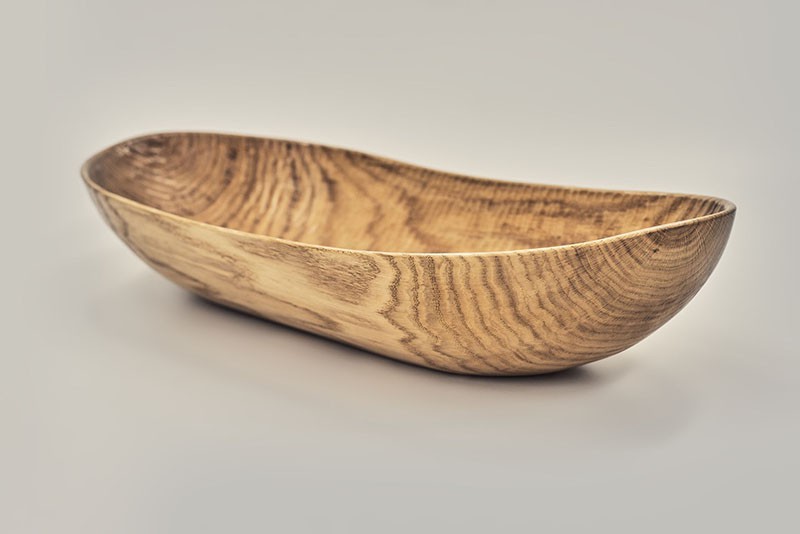
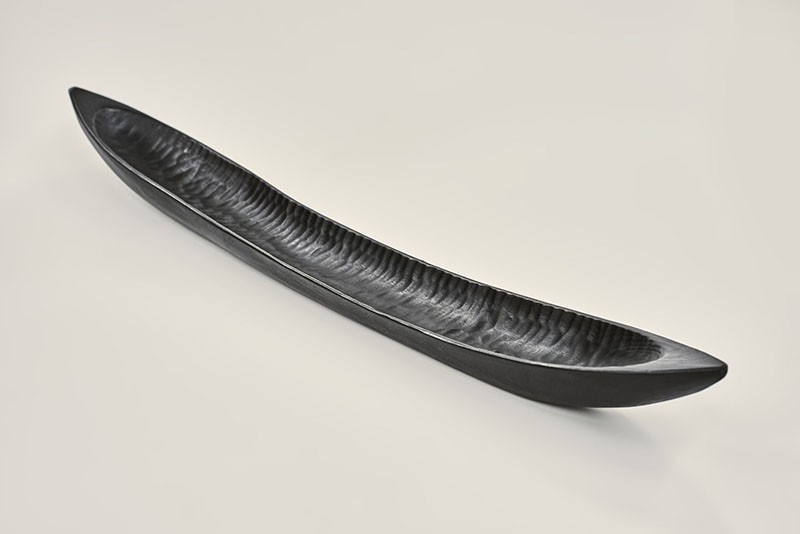
Rihards Vidzickis
Supervising craftsman
The work of the greenwood craftsman Rihards Vidzickis perfectly merges seemingly different industries - craftsmanship, science and tourism. Having studied the nuances of woodcraft for a long time, he went on to study for a Doctoral degree in Engineering from the Riga Technical University. Parallel to this, Rihards set up Vienkoči Park in Līgatne, with the carefully curated Woodcraft Museum as its central object. Rihards talks about wood, and particularly solid wood pieces with great enthusiasm, but his views on craftsmanship, its outlook in Latvia and its relationship with design in a broader sense are also well worth listening to.
The idea of creating a Woodcraft Museum came to Rihards in 1999, when after graduating from the Riga Secondary School of Crafts, Faculty of Woodwork, Rihards began his studies at the Riga Technical University. Rihards was supported by his father, a wood craftsman himself, who not only encouraged his son’s interest, but had also gathered a solid collection of pieces to start an exhibition. Spanning just under ten hectares, Vienkoči Park has been open for visitors for over 10 years. The master’s signature pieces are made of one–piece wood—log boats, kneading troughs and other bowls. Although this seems very niche, Rihards has no shortage of clients. He is a member of the Northmen’s Craftsmen’s Guild, and the majority of pieces he creates are commissioned from abroad.
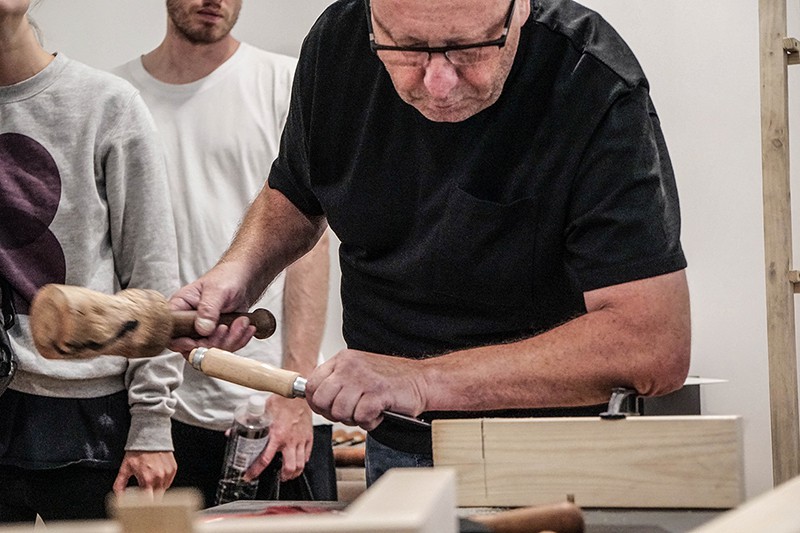
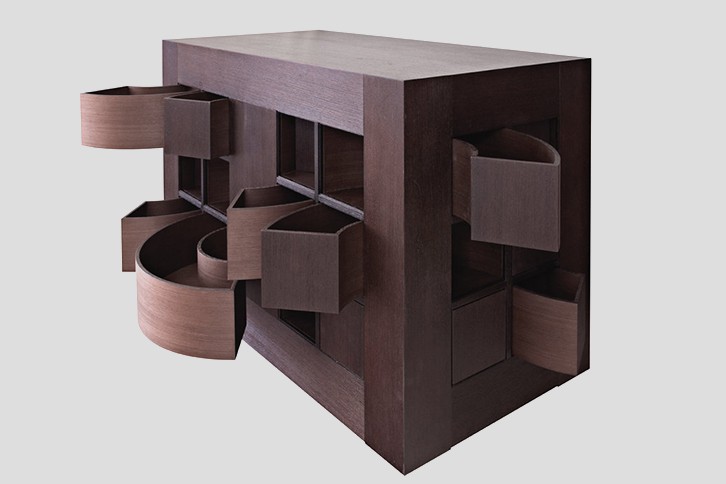
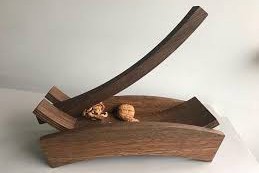
Jānis Straupe
Supervising artisan
The objects of artisan Jānis Straupe can make us rethink everything we know about furniture design. Among his works is A Chair within a Chair, The Double Table, one with a tilted surface top, The Sharp Chair, which is included in the collection of the Museum of Decorative Arts and Design, and the internationally recognized cabinet known as The Beetle. For the master himself, the biggest joy is a chance to challenge his colleagues and gravitation.
The great woodworker’s workshop in Vecmīlgrāvis, Riga is where he works on two types of projects: one is exclusive commissions, furniture and interior objects; the other is his personal creative pursuits: installations, tables, chairs, chests of drawers, etc., inspired by surrealism and made with the precision of a mathematician. Straupe recalls what he once heard from restorers: medieval craftsmen believed God saw everything, including the inside of every work, so it too had to be done with care. This sort of perfectionism is what describes Straupe’s work, but what drives him is his own maximalism.


Vizma Zvirbule
Birch Bark Weaving Workshop
Latvians enjoy a special relationship with trees. Some seek power from trees, some plant an oak or lime tree next to their house, some fight to preserve trees in cities and forests, while others complain about having to rake up trees in autumn. In Latvia, everyone’s life is played out next to trees. This is how it’s been from time immemorial. Wood was used to build houses and furniture, while firewood provided warmth and various wooden parts were used to make vessels. Archaeological digs have revealed vessels for storing jewellery dating back to the 2nd century, while remnants of these vessels have been found in ancient burial sites.
The collection of the National History Museum of Latvia contains many legacies of years gone by in the form of woven baskets, bark containers, birch bark containers, large and quite small, simple and carefully decorated. Every household contained baskets of various sizes. These were used to store food, clothing, jewellery, along with small wooden boxes for medicines, spices, tea, tobacco, in fact just about everything that needed to be stored in a household. Birch bark baskets and containers have unique moisture-regulating properties – salt can always be poured from them, flour is not contaminated by pantry moths, cranberries can be kept fresh until spring, and fresh fish last longer in birch bark containers. Liquids can also be kept in a skilfully made birch bark container. Farm inhabitants were adept at making various baskets and containers, which they made using a small knife.
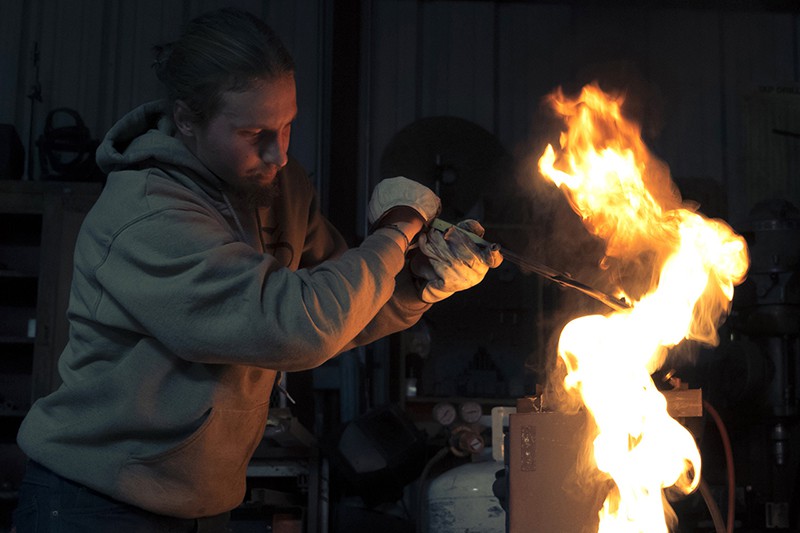
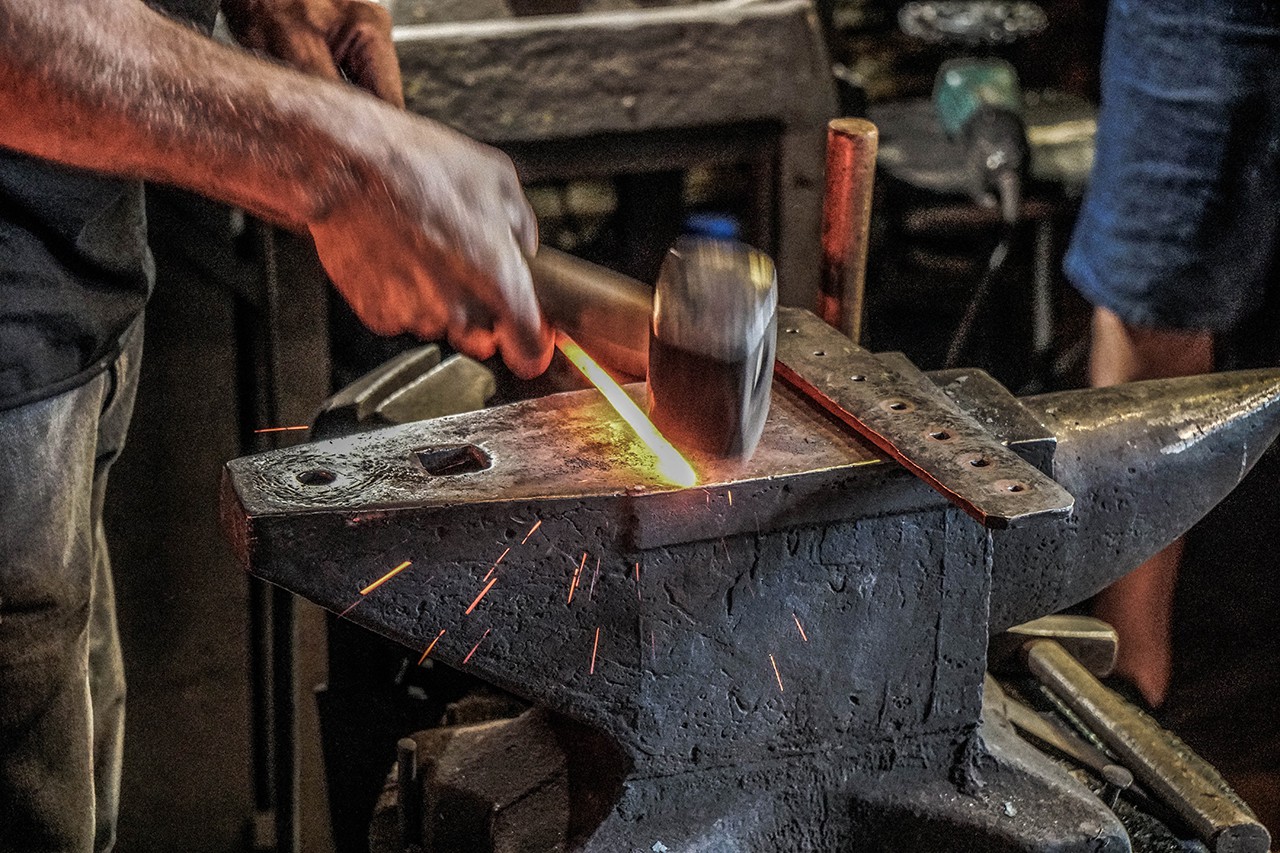
Sören Uhlmann
Blacksmith Workshop
Sören studied blacksmithing for 3.5 years during his traditional apprenticeship in germany. The focus on his education was on Design and restoration. He also is a instructor for historical European martial arts and studies historical fencing manuals for many years. With his profession in his pocket he the took up his backpack and travelled for 7 years non stop around the world as a travelling craftsmen. During his journey he learned from many masters all over the world and shifted his focus from restoration towards tool and sword making. He is highly invested in the process of making tools and swords in a traditional way and also in the there function and connection to the human body mechanics.
Bread baking workshop
Next to the woodwork workshop is an (outdoor) bread oven where students will bake bread under the watchful eye of master bakers. This is a story about bread that is baked with yeast. With yeast containing lactic acid bacteria. When bread ferments for a long time, 12-24 hours for example, it leavens and is ready for baking.

A thick and crunchy crust, soft on the inside, fragrant and delicious. The kind that your grandmother once told you that her grandmother used to bake. The kind that our generation is not accustomed to eating. Yeast is the ingredient that our ancestors used to bake bread. Yeast is the ingredient that was even used in Ancient Egypt thousands of years ago to give ordinary flatbread more air. As it ferments and leavens, the dough acquires pleasantly bitter nuances, transforming it into sourdough.
Līgatne the Paper Mill Village

Līgatne is a small village in Latvia, located along a picturesque stretch of the Gauja River Valley and it has deep roots in craftsmanship. For 200 years the name of Līgatne has been synonymous with its Paper Mill. It's historical centre together with historical buildings of the Mill and wooden living houses of the Mill’s workers is included in the list of cultural monuments of national importance. While visiting Līgatne, one can imagine the lives of 19th century workers, take a look into some of the numerous cellar caves, used to keep potatoes and vegetables, sample the local wines in a cave, and enjoy the nature of the Gauja Valley. In 2011 Līgatne Village was awarded the title of the national winner of European Destinations of Excellence (EDEN) due to efforts to preserve and develop Līgatne’s industrial heritage.
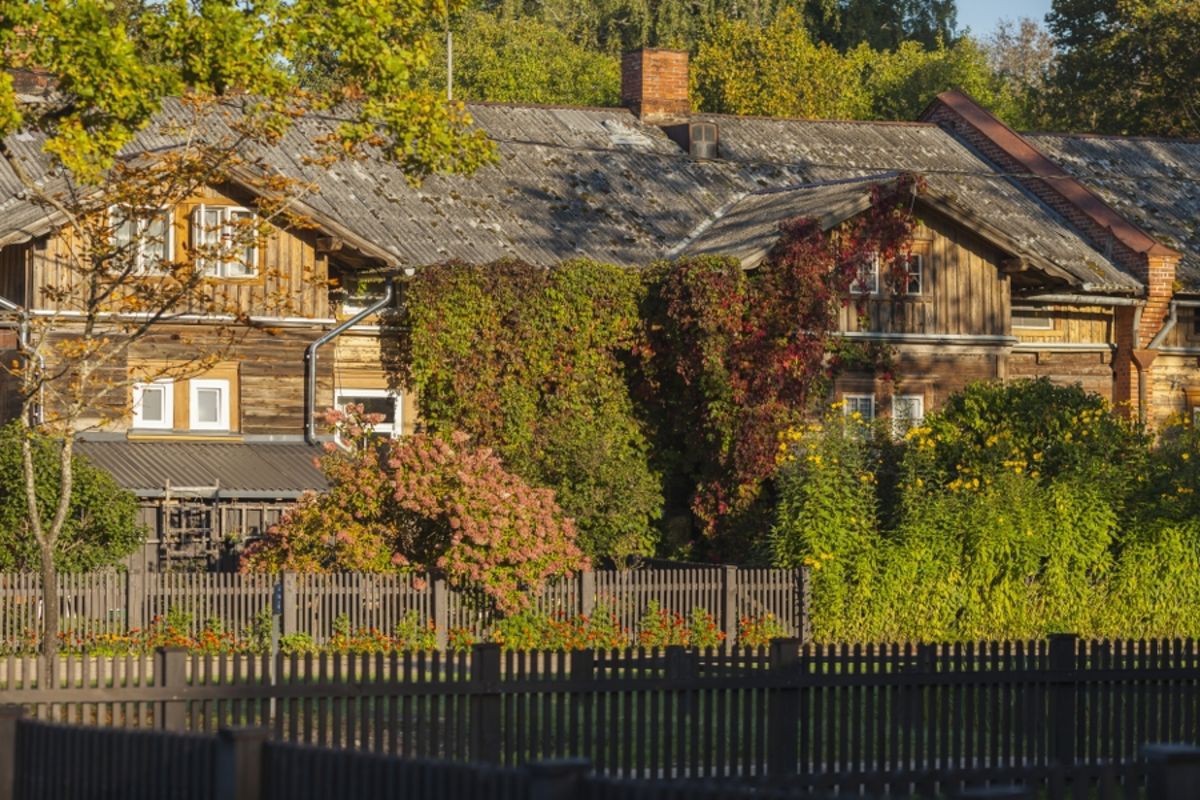
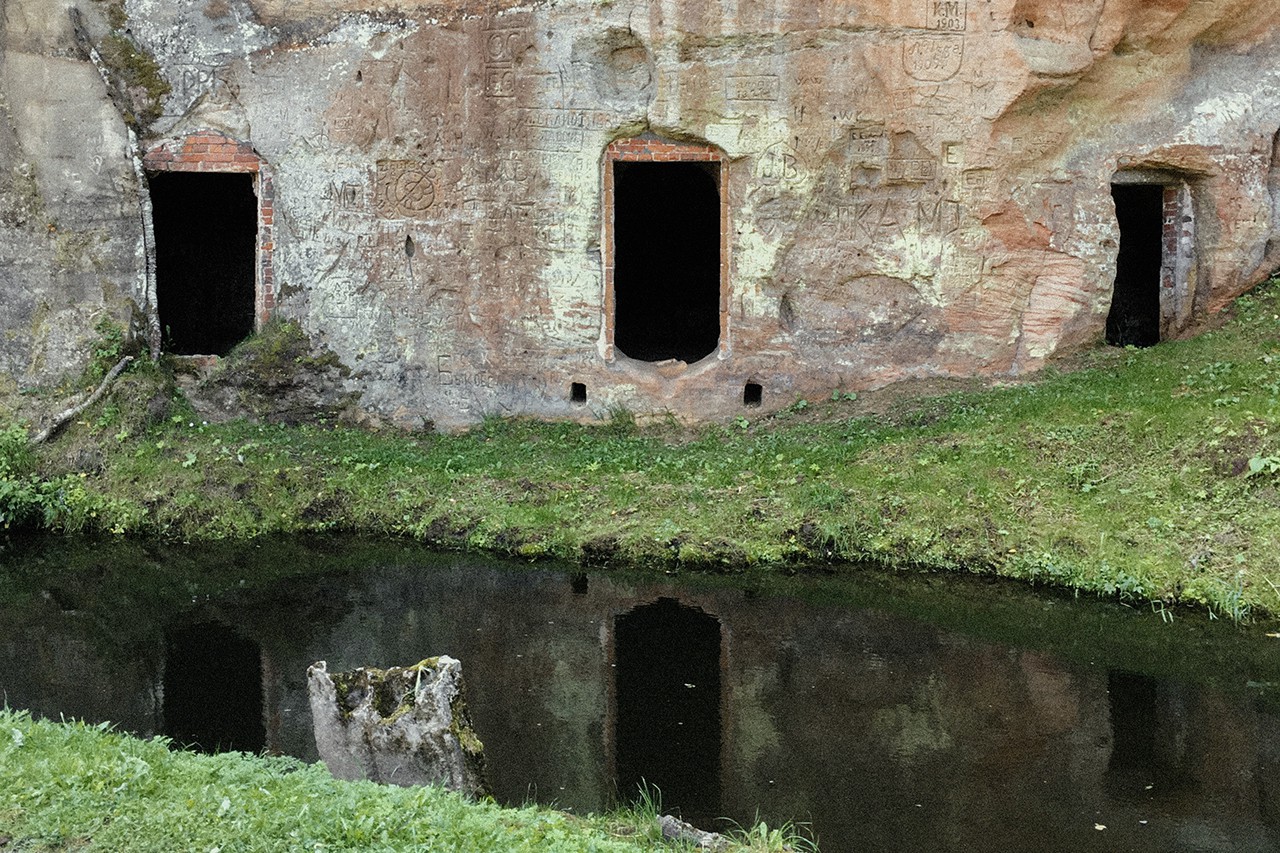
Līgatne is in Gauja National Park, which contains a rich variety of plant and animal species. In the park you can explore ancient rocks, caves, grottos and rapids, as well as exciting walking routes. Līgatne lies in Vidzeme on the left bank of the river Gauja at the centre of the municipality. As it passes Līgatne, the river has winding banks that feature sandstone outcrops and caves formed in rocks. It is a town rich in the natural colours of its luscious woods and meadows, the golden, grey and red rocks and the blue river flowing through it.

Accomodation
Accommodation will be provided for all participants at the Green Bear guest house. Guests will stay in double and triple rooms in a modern log house in the centre of Līgatne, with a view of the forest and the valley, and containing all the amenities you require. Each room has a shower and WiFi. The accommodation will also include a co-working space, where students can make tea and coffee. Meals will also be provided at the Green Bear. Every day local transport from the guest house to the workshop venue will be provied for all participants (Distance from Green Bear to the Vienkoči Woodwork workshop is 6.5km).
Participation fee and terms
The participation fee for a student is 300 euro (EUR). The participation fee covers lectures, workshops, work materials, excursions, accommodation, meals and local transport in the location of the Mad Design Summer School.
Participants have to cover the travel to Latvia and back home by themselves. Valid insurance is required since you'll be working with mechanical tools.
Selected participants will be announced on May 31st.
Eligibility
• over 18 years old at the time of application
• a young craftsman or a young designer / architect with a strong interest in craftsmanship
• hands-on 3D experience
• a student, a young graduate or practicing professional
• good knowledge of English (minimum B2)
• able to attend the whole course
• be able to travel in Europe at the time of course
*Please note that your data will be shared with partner organizations for the selection.
Design Summer School
Founded in 2016, Mad Design Summer School offers an alternative approach to design and art education, inspired by the Black Mountain College (1933-1957). The name is derived from the keywords which define our school’s main philosophy – Man and Design.

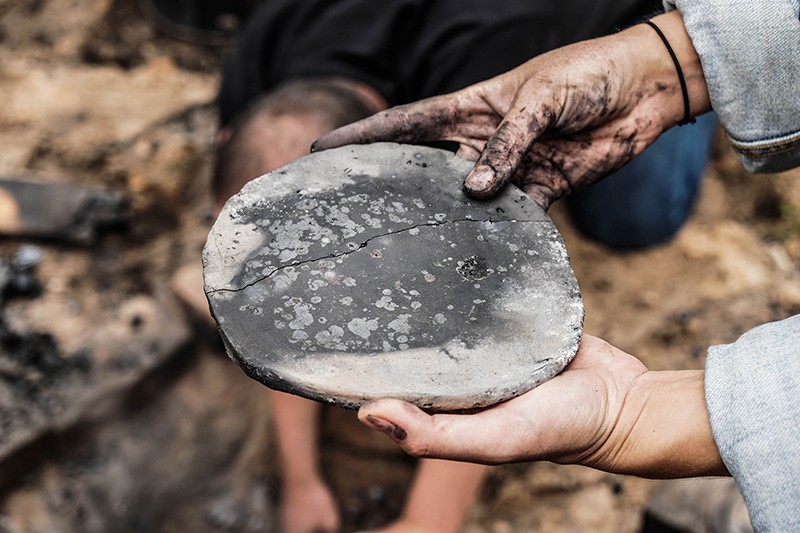
At our school’s base lies a unique creative environment, shaped by bringing designers, artists, craftsmen and scientists together. For our students this means living and working together with tutors under one roof for a short span of time. We want to encourage creative development with this setting, as it promotes dialogue, discovery, the modeling of creative attitudes and mutual respect. Over the years we have seen student creativity flourish thanks to this opportunity to work collaboratively with tutors, which in the long run helps to shape a student’s self-assessment.
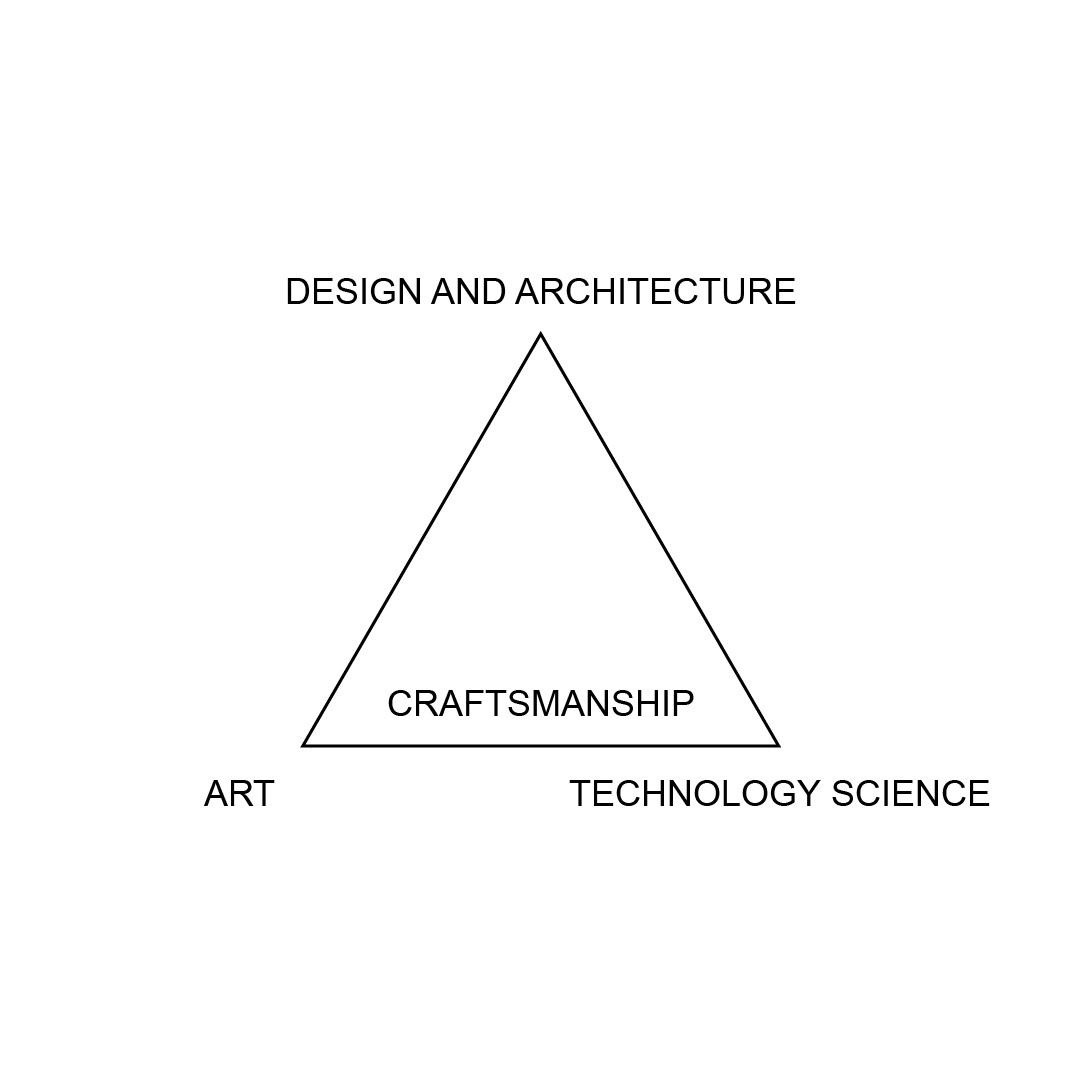
Despite today’s rapid developments in technology, the tradition of craftsmanship lives on and has recently been growing in popularity again in the eyes of the public. We are very happy to see this development. Artisanship used to be a key feature in sustainable fabrication and we aim to promote its place in the balance of the creative process. We believe that by combining both new and traditional methods, by fusing design, art, technology, science and craftsmanship, true creative thinking can take place. With us young creatives learn idea development not only on paper and screens, but also with raw materials and their hands. To guide this we highlight craft with the help of talented local artisans. By preserving, promoting and passing on their knowledge, we aim to inspire tomorrow's designers in their journeys to create innovative and meaningful products.
Mad is a not-for-profit innovative education and consulting organisation, which is actively engaged in the field of Latvian design, arts and crafts education. It promotes the development of innovative, internationally renowned design and crafts education projects, exhibitions, and cultural initiatives in Latvia and Europe. It has developed a series of workshops and lectures on the issues of sustainability, craftsmanship, 3d printing, environmental accessibility and exhibition design.
Mad team
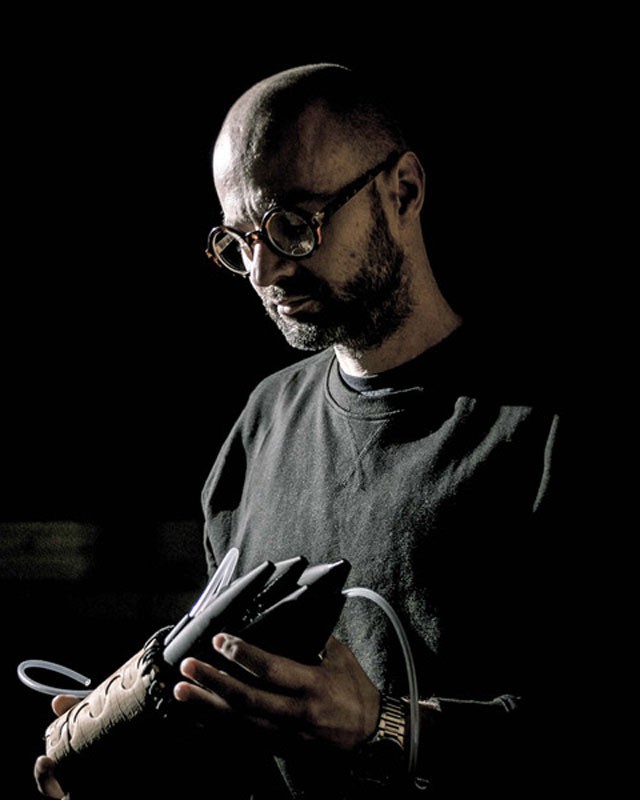
Rihards Funts
Programme director
Rihards is an industrial designer and has been running his design studio since 2007. The specific character of the studio is formed by combining design, craft, art, science and social responsibility, simultaneously ensuring a high quality of the product. Besides his work in the studio Rihards is a tutor and mentor at various international design, art and entrepreneurship workshops. Design Studio Rihards Funts has been awarded in several local as well as international product and graphic design competitions. His work has been published by Gestalten, Laurence King Publishing, Rockport Publishing.
Rihards is an industrial designer and has been running his design studio since 2007. The specific character of the studio was formed by combining design, craft, art, science and social responsibility, simultaneously ensuring a high quality of the product. Besides his work in the studio Rihards is a tutor and mentor at international design, art and entrepreneurship workshops. Design Studio Rihards Funts has been awarded in several local and international product and graphic design competitions, his work has been published by Gestalten, Laurence King Publishing, Rockport Publishing.
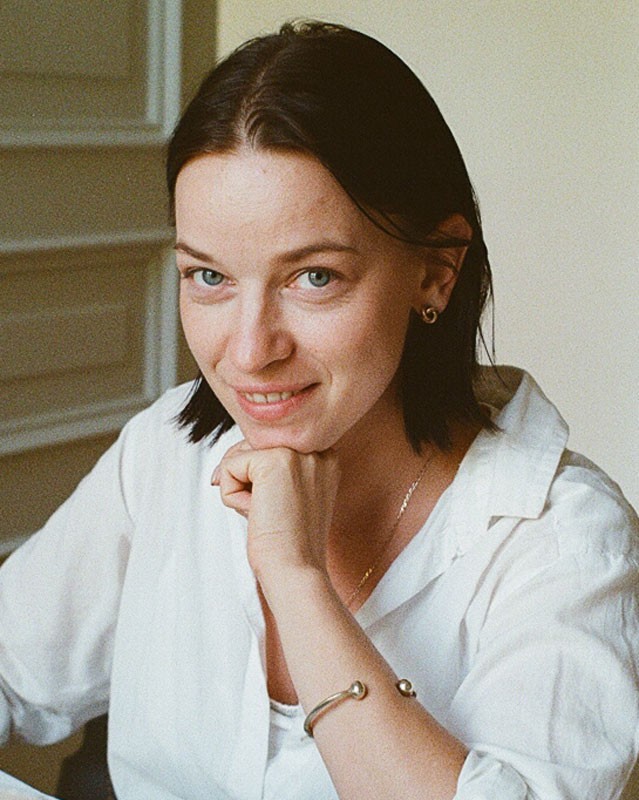
Klinta Harju
Administrative director
After studying journalism and public relations at university, she worked for a public TV channel, as well as an international advertising agency. Klinta has experience working in a wide range of businesses as a project manager, as well as involving social influence, managing projects for the biggest non-governmental, non-profit humanitarian organisation in Latvia - Latvian Red Cross and SOS Children's Villages Latvia. Producing the Latvian Pavilion at the Venice Architecture Biennale 2018 and Latvian exhibitions at the Prague Quadrennial of Performance Design and Space 2019, are just two of Klinta’s projects in the fields of cultural management and creative industries.
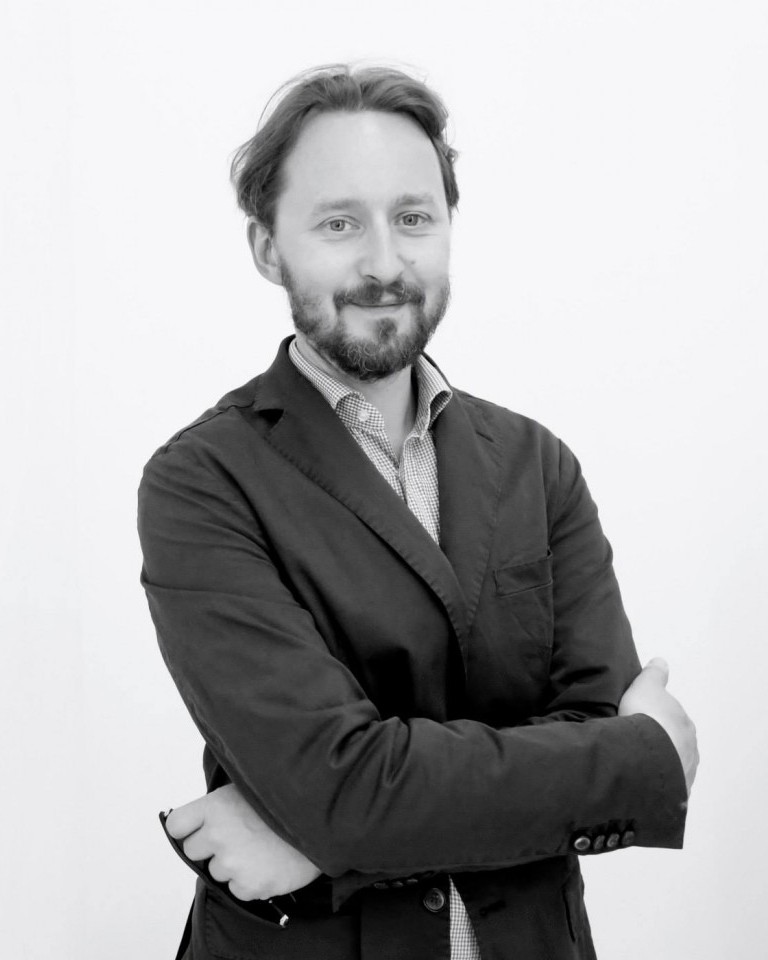
Andris Brinkmanis
Lecturer
Andris is an art critic and curator, born in Riga and based in Milan. He is a Senior lecturer and the Course Leader of BA in Painting and Visual Arts at NABA in Milan. His most recent curatorial projects are “Infancy and History” (OCAT, Beijing 2019); “Signals from Another World. Asja Lācis and Children’s Theatre” (AVTO, Istanbul 2019), “Asja Lācis. Engineer of the Avant-Garde” (Latvian National Library, 2019), “2nd Yinchuan Biennale. Starting from the desert Ecologies on the Edge” with Marco Scotini (Yinchuan, China, 2018); “Mei Lan Fang and The Soviet Theatre” (Research project for “The Szechwan Tale. Theatre and History” at the First Anren Biennale in Anren, China and Milan in 2018); “Signals from another world. Asja Lācis Archives” (Documenta 14, Kassel 2017); and “Disobedience Archive (The Park)” with Marco Scotini (SALT, Istanbul, 2014). Brinkmanis has collaborated with magazines and publications such as Corriere della Sera, Alfabeta 2, Flash Art International, Monument to Transformation, SOUTH as a State of Mind and Studija. His research is centred on alternative education and the relationship between education and visual culture.

Toms Lucāns
3D lab leader
Toms is an industrial designer. After studying at Design Academy Eindhoven he continued to work with Rihards Funts at studio RIJADA on projects of various scale, ranging from furniture and electronic devices to exhibition design and environmental objects. Toms currently works for Amsterdam-based eyewear company Ace & Tate as Chief Technical Designer, where he is responsible for developing new eyewear collections and accessories.
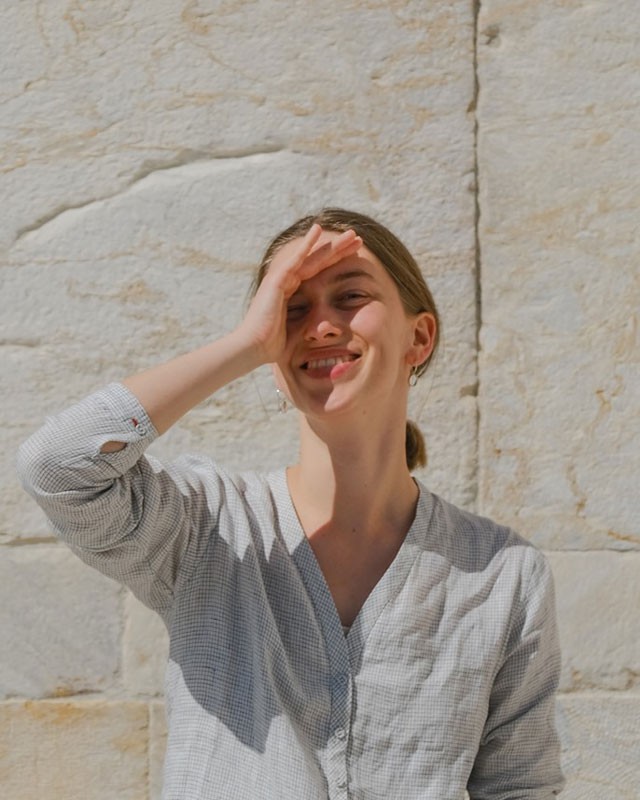
Julia Bocanet
Assistant
After graduating from Design Academy Eindhoven in 2016, and having interned with craftsmen in both Kyoto and New York, Julia established herself as a freelance jewelry designer and goldsmith in her hometown of Amsterdam. Led by her passion for handmade craft and sustainable design solutions she always looks for a narrative in her creations - making simple yet surprising designs that tell a story.
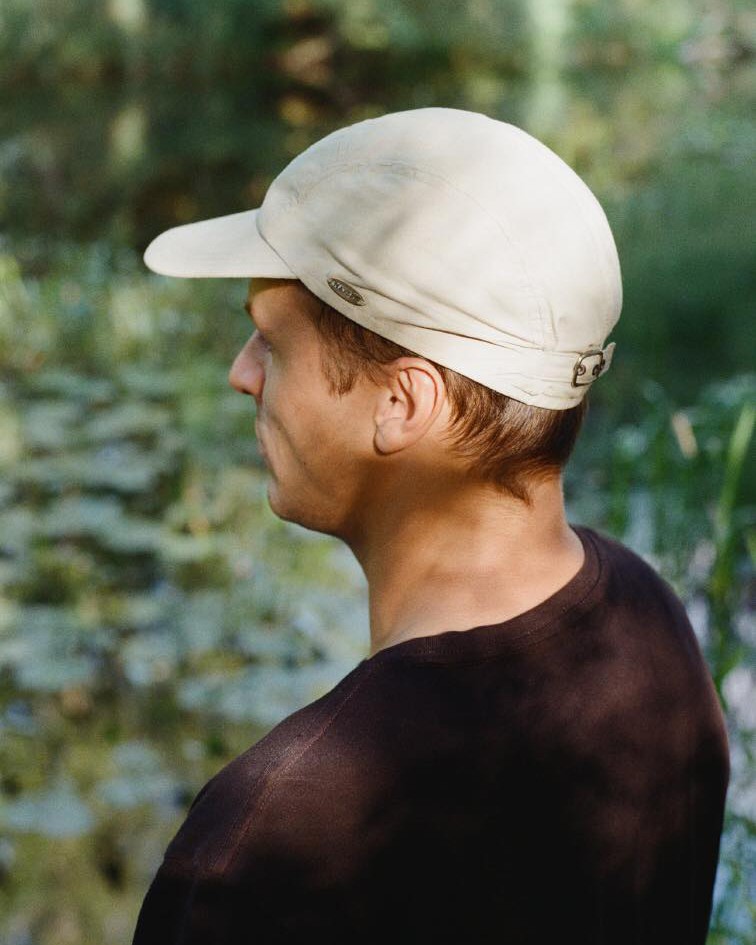
Ģirts Reiniks
Graphic designer
Ģirts has studied geology at the University of Latvia and visual communication at the Art Academy of Latvia. Has been working on various projects in the field of arts and culture and has been responsible for the visual communication of Mad Design Summer School.